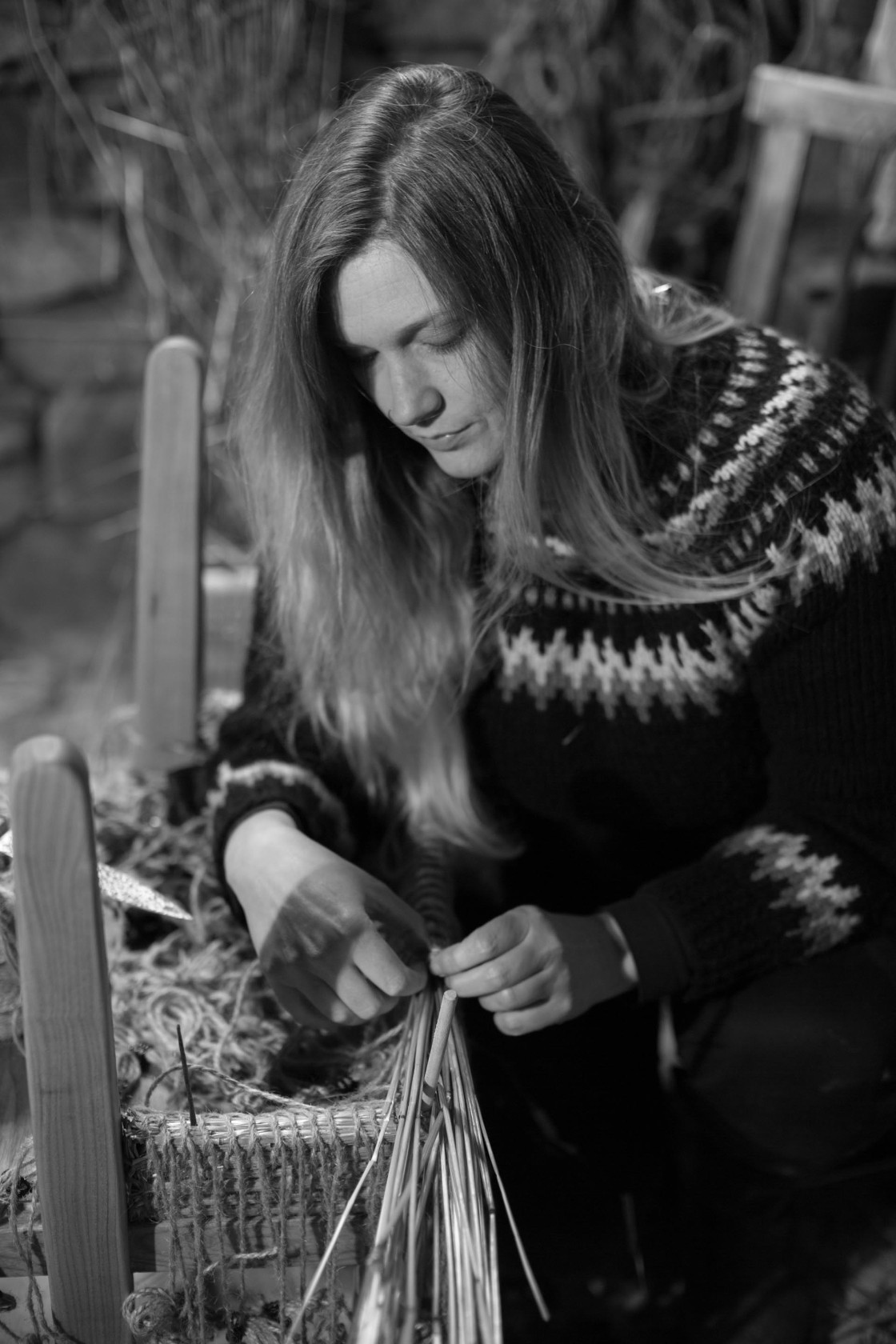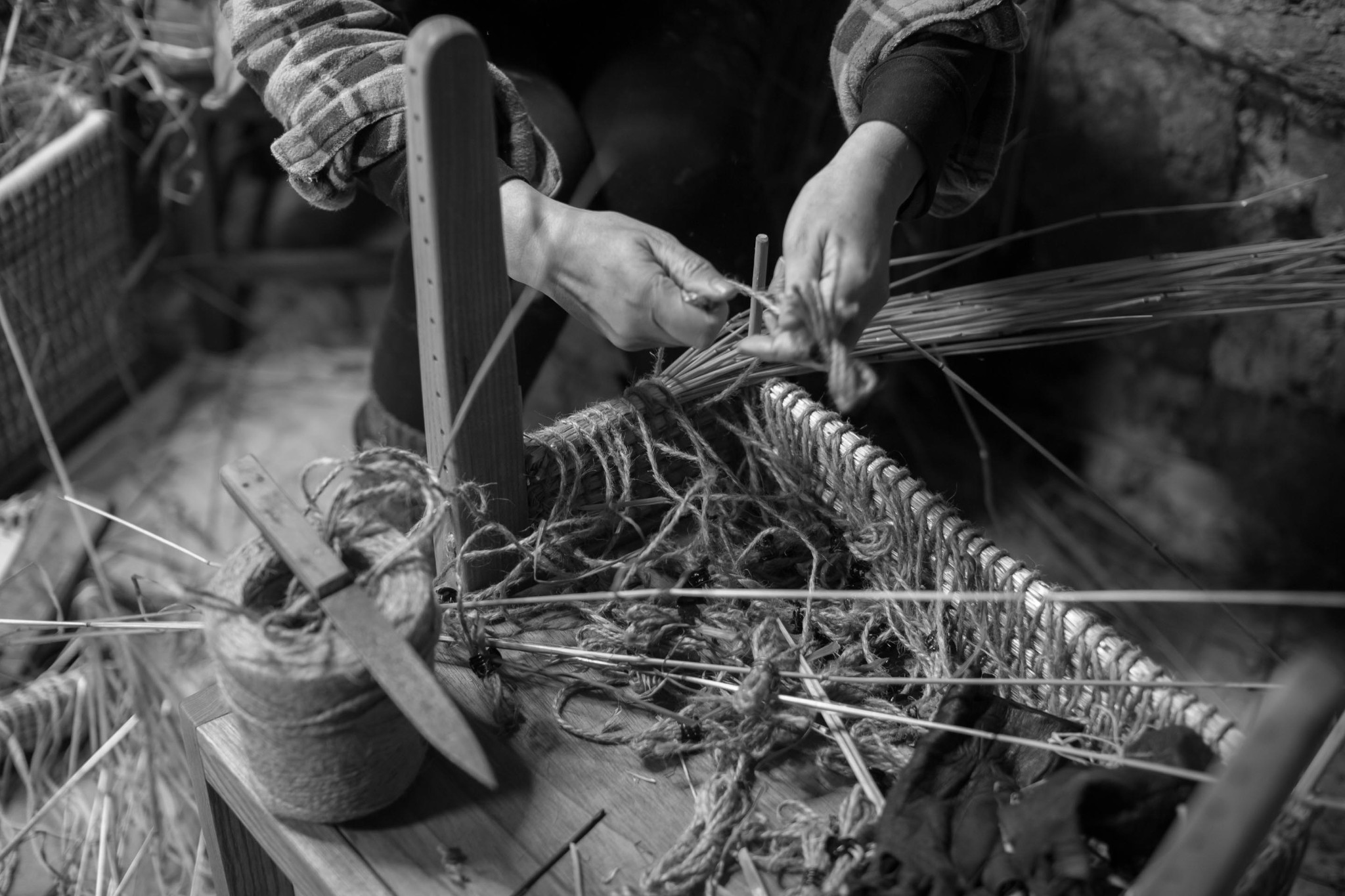Shetland Museum kicks off traditional straw crafts winter club
Published: 01 November 2022
Shetland Museum and Archives is launching a series of winter evening sessions which will focus on craft techniques using oat straw and are inviting members of the public to come along to an open evening on Wednesday 9 November to find out more.

Photo by Ewan Nicolson
The project, which is being organised by Fair Isle chairmaker Eve Eunson, is a collaboration between Shetland Museum and some of Shetland’s experienced straw workers. Over a six-week period they will be sharing their knowledge with anyone who is interested in learning, improving or sharing skills in any of the techniques.
Over the last three years the Heritage Crafts Association have listed five of Shetland’s traditional crafts as critically endangered. Three of these are concerned with basketry techniques using oat straw: kishie making, Fair Isle strawback chair making and stitched coiled straw basket making. Very few people in Shetland are practising these crafts and it is vital that the skills are passed on if they are to survive.
Initially members of the public are invited to attend an informal drop-in evening on Wednesday 9 November at the Shetland Museum from 7.00 – 9.00pm to learn more about each of the three techniques and decide on what sort of techniques they might like to learn.

At the open evening Dr Ian Tait will delve into the history of the Shetland oats and the different straw crafts, including showing some traditional examples. Makers from each of the disciplines will be on hand to inform and inspire. Ewan Balfour will demonstrate kishie making; Eve Eunson will be working on Fair Isle strawback chair backs; and members of the Hymhus Basket Group will show off their coiled stitched straw skills.
Organiser, Eve Eunson said: “I am really pleased to be getting folk together to work with straw this winter. As far as I ken this is the first time all three of the straw crafts will be under one roof and we will be able to really see and understand the differences in the techniques.
“The only way to save these skills from extinction is to share the knowledge and encourage folk to have a go. I hope that the workshops will attract all different ages and abilities, from complete beginners to experienced makers, who maybe just fancy a sociable environment to work on their project. There is no pressure to be there every week, just come along when you can.”
The sessions are aimed at total beginners as well as those with more experience and will run every Wednesday evening from 16 November – 21 December, 7.00 – 9.00pm.
Also attending the open evening will be basket maker Deepa Shah and members of a new basket making group at Hymhus, Bigton Collective’s new community space.
Deepa said: “My colleague, Dr Mark Maudsley, learnt stitched coiled straw basketry from the late Jimmy Work, a well-known Shetland basket maker. Mark passed on these skills to me and, after many folk expressed an interest in learning the technique, we decided to set up a straw basket group in Bigton earlier this year. The group, of between 5-10 people, meet every Friday morning at Hymhus, and join the Friday friends craft and lunch group who also regularly meet there.”
Deepa is quick to promote the health benefits of group crafts: “It is a real highlight of the week for many of us and gives us a chance to be creative with the encouragement and inspiration of others, hear stories of Shetland past and current, and build local connections. Working as a GP I have seen how so many people feel isolated. Craft groups like this are a great way to learn new skills and meet people, both of which are an important foundation to good mental health.
“The Hymhus basket group are excited to attend the open evening at the Shetland Museum this month. We are looking forward to learning other traditional straw techniques, as well as sharing skills and inspiring others.”
Dr Ian Tait said: “Straw used to be part of everyone’s lives in Shetland for centuries; so prevalent that the items folk made, and the skills that went into doing it, seemed unremarkable. People used plants to make a great range of items for use in the home, on the farm, and in a boat. In a land without timber, a lot of these were containers that were made elsewhere in wood, and because most people lived on a subsistence farm, there was ample supply of resources. Straw isn’t that durable under heavy work, or outdoors, so items were constantly replaced. Alas, these things are now just antiquarian curios, because – of all Shetland crafts – our most specially unique one doesn’t appeal to folk today. Let’s try to do something about that!”

